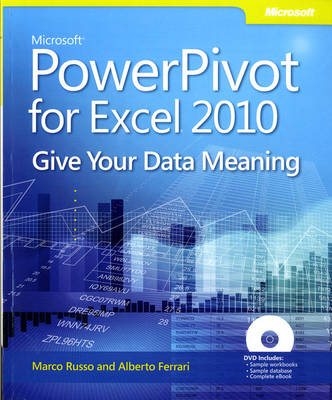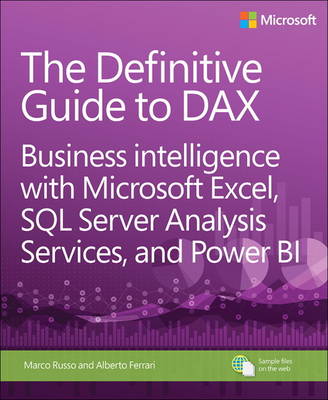Business Skills
4 total works
Microsoft PowerPivot for Excel 2010: Give Your Data Meaning introduces PowerPivot in Excel 2010 to power users and data analysts who want to give their data meaning by creating their own Business Intelligence models. And with Microsoft Excel 2010: Data Analysis and Business Modeling, you'll learn the best ways to use Office Excel 2010 for data analysis and business modeling. Award-winning professor and statistician Wayne Winston shares practical examples to help you transform data into bottom-line results. Web site includes practice files.
The two books included in this kit are:
Analyzing Data with Power BI and Power Pivot for Excel
by Alberto Ferrari and Marco Russo
Renowned DAX experts Alberto Ferrari and Marco Russo teach you how to design data models for maximum efficiency and effectiveness.
How can you use Excel and Power BI to gain real insights into your information? As you examine your data, how do you write a formula that provides the numbers you need? The answers to both of these questions lie with the data model. This book introduces the basic techniques for shaping data models in Excel and Power BI. It’s meant for readers who are new to data modeling as well as for experienced data modelers looking for tips from the experts. If you want to use Power BI or Excel to analyze data, the many real-world examples in this book will help you look at your reports in a different way—like experienced data modelers do. As you’ll soon see, with the right data model, the correct answer is always a simple one!
By reading this book, you will:
• Gain an understanding of the basics of data modeling, including tables, relationships, and keys
• Familiarize yourself with star schemas, snowflakes, and common modeling techniques
• Learn the importance of granularity
• Discover how to use multiple fact tables, like sales and purchases, in a complex data model
• Manage calendar-related calculations by using date tables
• Track historical attributes, like previous addresses of customers or manager assignments
• Use snapshots to compute quantity on hand
• Work with multiple currencies in the most efficient way
• Analyze events that have durations, including overlapping durations
• Learn what data model you need to answer your specific business questions
About This Book
• For Excel and Power BI users who want to exploit the full power of their favorite tools
• For BI professionals seeking new ideas for modeling data
Perform powerful data analysis with DAX for Microsoft SQL Server Analysis Services, Excel, and Power BI
Master core DAX concepts, including calculated columns, measures, and error handling
Understand evaluation contexts and the CALCULATE and CALCULATETABLE functions
Perform time-based calculations: YTD, MTD, previous year, working days, and more
Work with expanded tables, complex functions, and elaborate DAX expressions
Perform calculations over hierarchies, including parent/child hierarchies
Use DAX to express diverse and unusual relationships
Measure DAX query performance with SQL Server Profiler and DAX Studio
Microsoft Excel 2013 Building Data Models with PowerPivot
by Alberto Ferrari and Marco Russo
Your guide to quickly turn data into results.
Transform your skills, data, and business—and create your own BI solutions using software you already know and love: Microsoft Excel. Two business intelligence (BI) experts take you inside PowerPivot functionality for Excel 2013, with a focus on real world scenarios, problem-solving, and data modeling. You'll learn how to quickly turn mass quantities of data into meaningful information and on-the-job results—no programming required!
- Understand the differences between PowerPivot for Self Service BI and SQL Server Analysis Services for Corporate BI
- Extend your existing data-analysis skills to create your own BI solutions
- Quickly manipulate large data sets, often in millions of rows
- Perform simple-to-sophisticated calculations and what-if analysis
- Create complex reporting systems with data modeling and Data Analysis Expressions
- Share your results effortlessly across your organization using Microsoft SharePoint
Authors’ note on using Microsoft Excel 2016: This book’s content was written against Excel 2013, but it is useful and valid for users of Excel 2016 too. Excel 2016 introduces several new DAX functions and an improved editor for DAX without changing any existing behavior. In other words, all of the concepts and examples explained in this book continue to work with Excel 2016.



